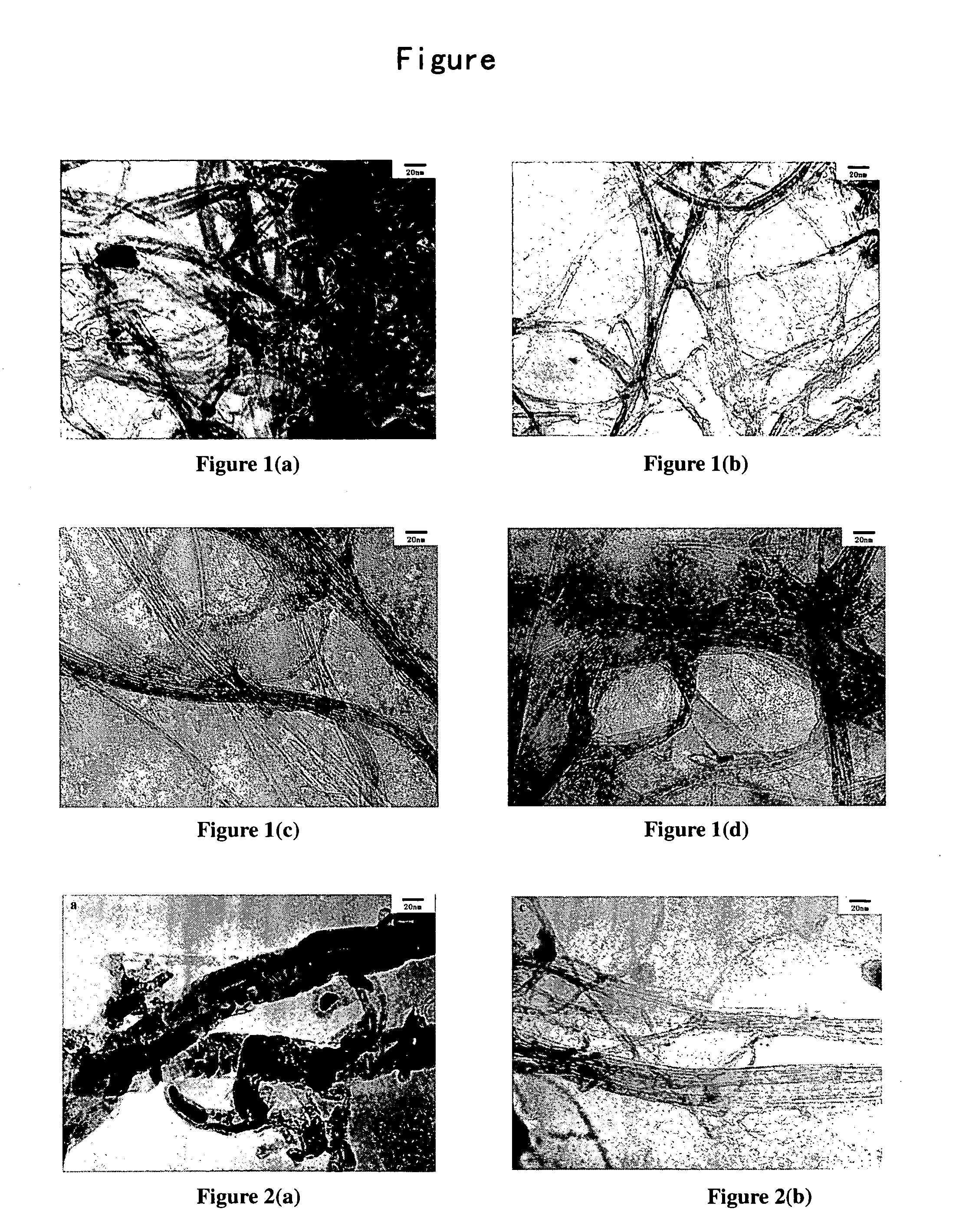Method of synthesizing single walled carbon nanotubes
a single-walled carbon nanotube and carbon nanotube technology, applied in the field of nanotechnology, can solve the problems of affecting the application of swnts, lack of efficient and cheap mass production methods, and difficult preparation of swnts, and achieve the effect of low cost and high purity
- Summary
- Abstract
- Description
- Claims
- Application Information
AI Technical Summary
Benefits of technology
Problems solved by technology
Method used
Image
Examples
example 1
[0039] Ammonium molybdate, iron nitrate, magnesium nitrate and citric acid solution are mixed, followed by drying and calcination in the air at about 550° C. to give a composite oxide powder with an atomic ratio of Mo:Fe:Mg of 3:10:100, which is to be used as the precursor of the Mo—Fe—MgO catalyst. Into a small fluidized reactor (30 mm in diameter), 100 mg of the powders are put and then an Ar flow of about 150 ml / min is introduced. The temperature of the reactor is raised to about 1000° C., and then methane gas is introduced at about 45 ml / min. The reaction is allowed to proceed for about 30 minutes, and then the reactor is cooled to room temperature. The gross product is washed with HCl to remove MgO and most metals, further washed by water, and dried, and then a black powder product of 99 mg is obtained. By observing with an electron microscope, it reveals that most product are amorphous carbon and MWNTs as shown in FIG. 1(a). Contrary to expectation, under the same conditions a...
example 2
[0040] Under the same conditions of example 1 except that water of 1.4 kPa partial pressure is added into the feed gas, 41 mg black product is obtained. The black product is highly pure SWNTs with amorphous carbon and MWNTs hardly observed, as shown in FIG. 1(c).
example 3
[0041] Under the same conditions of example 1 except that water of 2.0 kPa partial pressure is added into the feed gas, 40 mg black product is obtained. The black product is highly pure SWNTs with amorphous carbon and MWNTs hardly observed, as shown in FIG. 1(d).
PUM
| Property | Measurement | Unit |
|---|---|---|
| temperature | aaaaa | aaaaa |
| temperature | aaaaa | aaaaa |
| temperature | aaaaa | aaaaa |
Abstract
Description
Claims
Application Information
 Login to View More
Login to View More - R&D
- Intellectual Property
- Life Sciences
- Materials
- Tech Scout
- Unparalleled Data Quality
- Higher Quality Content
- 60% Fewer Hallucinations
Browse by: Latest US Patents, China's latest patents, Technical Efficacy Thesaurus, Application Domain, Technology Topic, Popular Technical Reports.
© 2025 PatSnap. All rights reserved.Legal|Privacy policy|Modern Slavery Act Transparency Statement|Sitemap|About US| Contact US: help@patsnap.com

